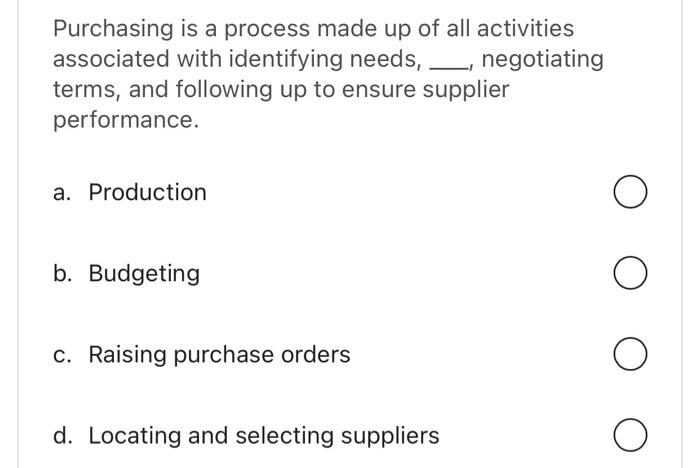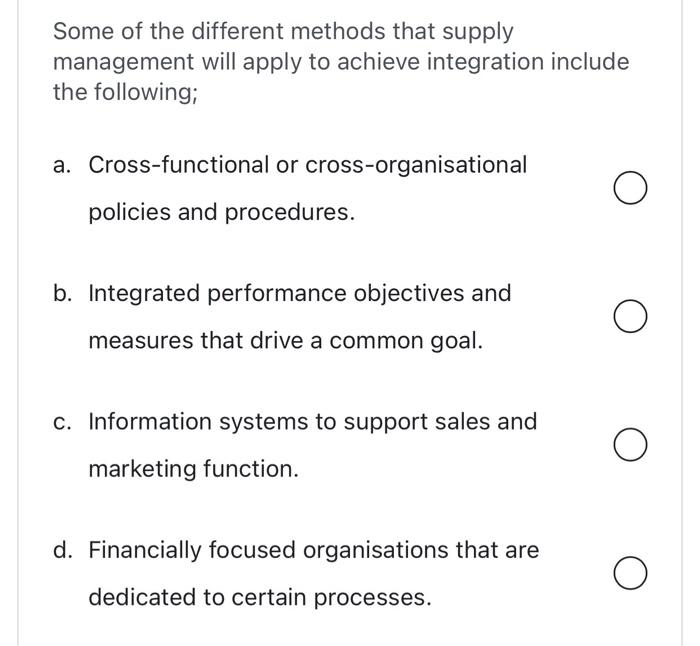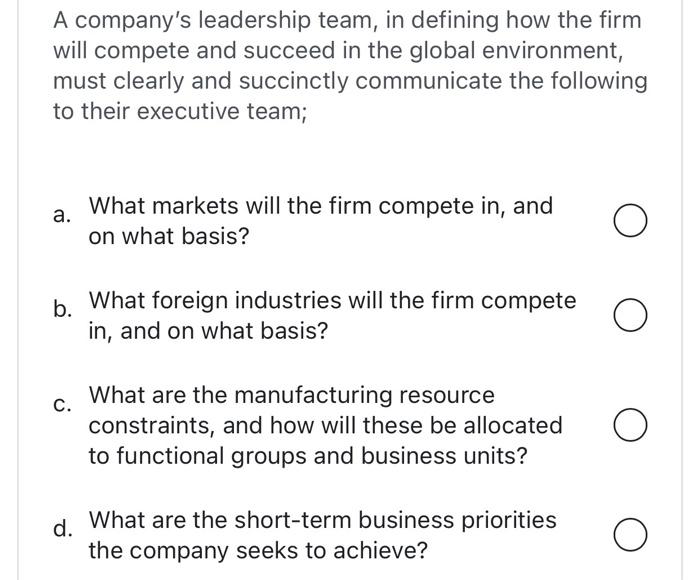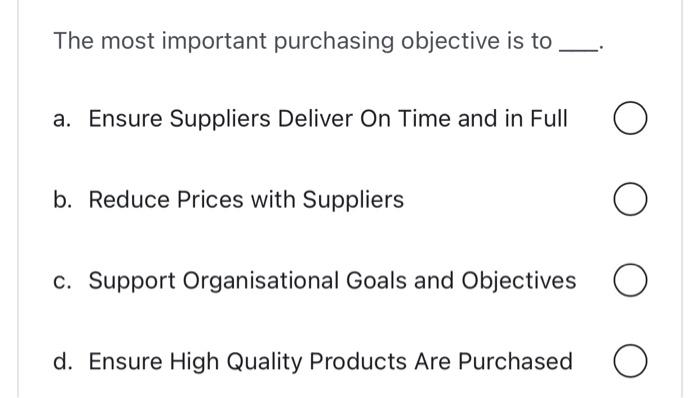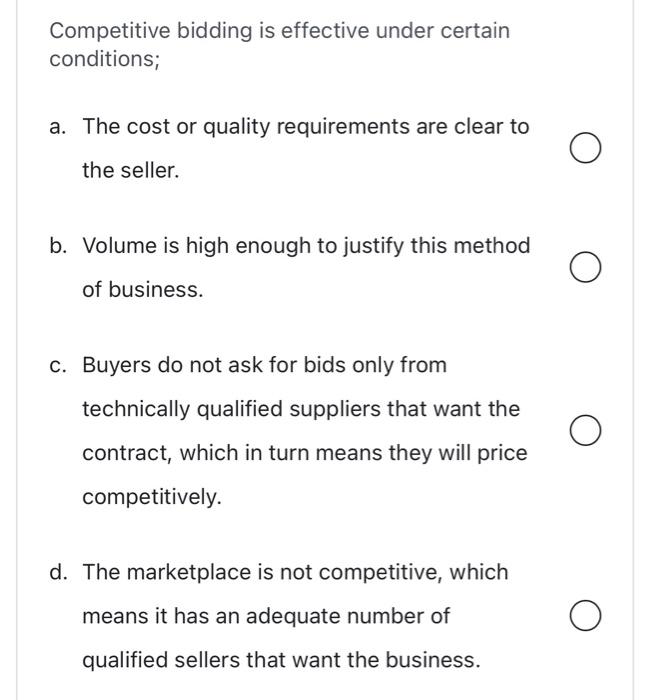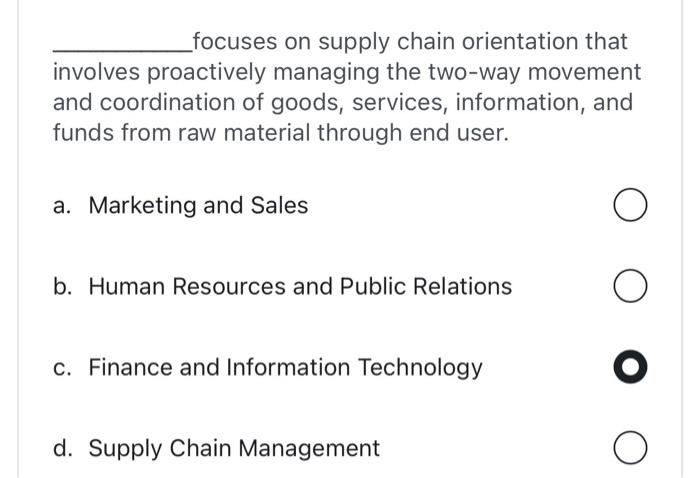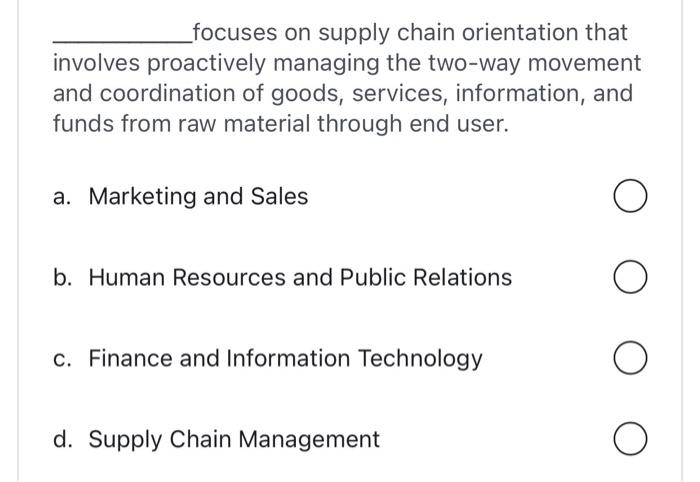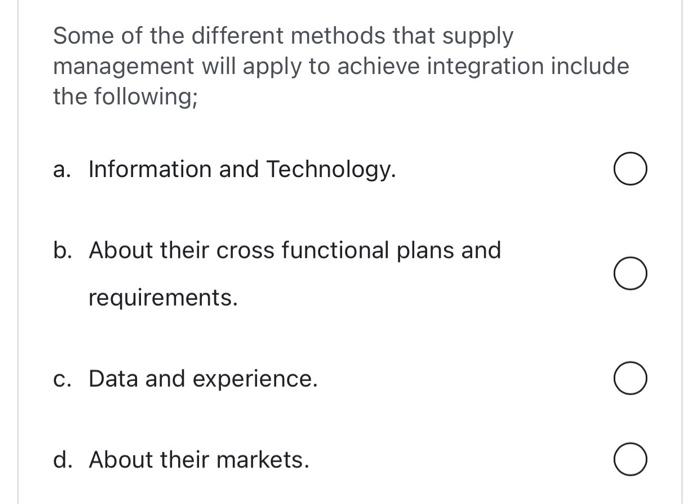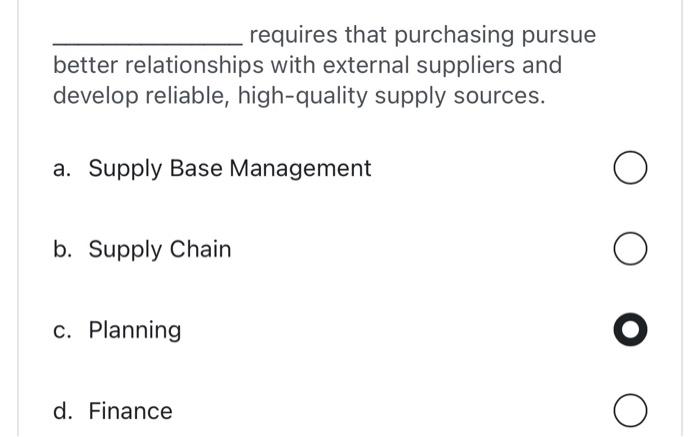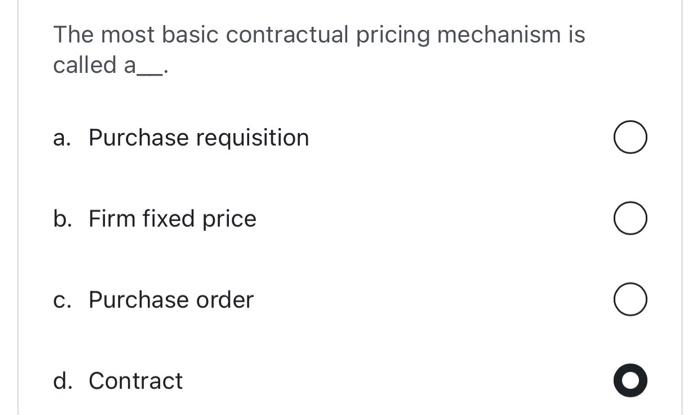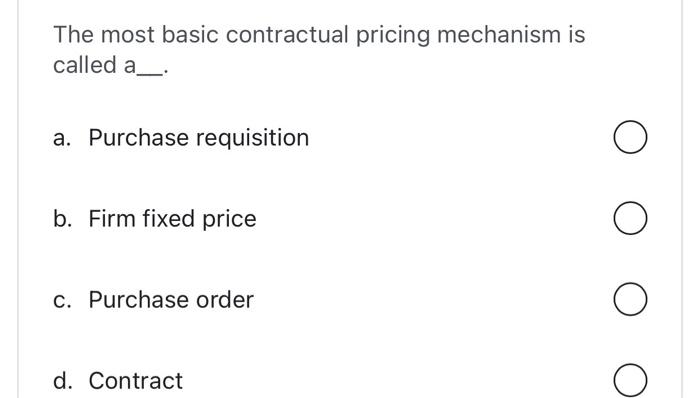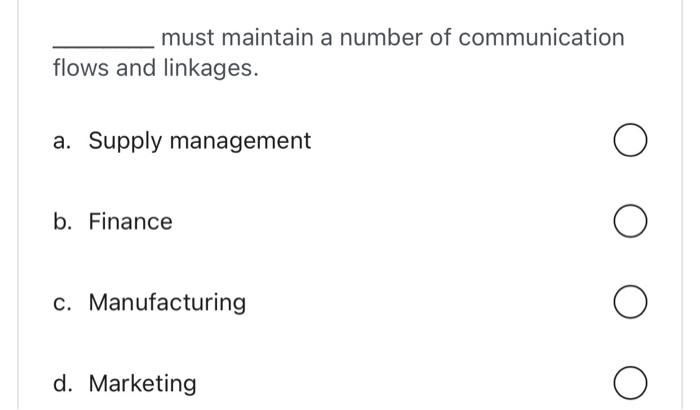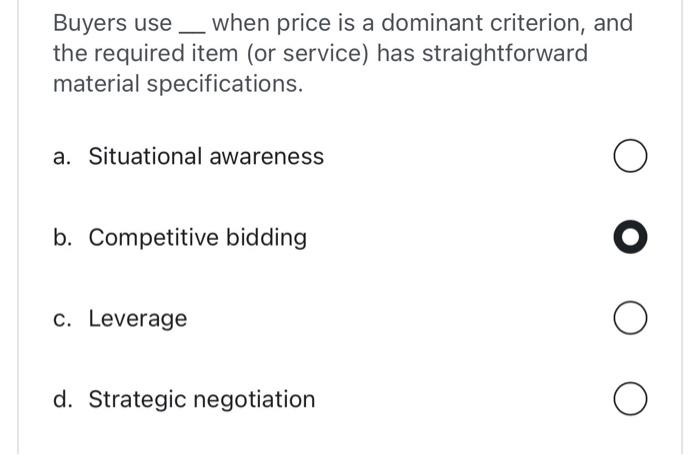Purchasing is a process made up of all activities associated with identifying needs, , negotiating terms, and following up to ensure supplier performance. a. Production b. Budgeting c. Raising purchase orders d. Locating and selecting suppliers Some of the different methods that supply management will apply to achieve integration include the following; a. Cross-functional or cross-organisational policies and procedures. b. Integrated performance objectives and measures that drive a common goal. c. Information systems to support sales and marketing function. d. Financially focused organisations that are dedicated to certain processes. A company's leadership team, in defining how the firm will compete and succeed in the global environment, must clearly and succinctly communicate the following to their executive team; a. What markets will the firm compete in, and on what basis? b. What foreign industries will the firm compete in, and on what basis? c. What are the manufacturing resource constraints, and how will these be allocated to functional groups and business units? d. What are the short-term business priorities the company seeks to achieve? The most important purchasing objective is to a. Ensure Suppliers Deliver On Time and in Full b. Reduce Prices with Suppliers c. Support Organisational Goals and Objectives d. Ensure High Quality Products Are Purchased are appropriate for situations in which there is a risk that a large contingency fee might be included using a fixed-price contract. a. Cost-based contracts b. Terms and conditions c. Certificate of analysis d. Invoices Competitive bidding is effective under certain conditions; a. The cost or quality requirements are clear to the seller. b. Volume is high enough to justify this method of business. c. Buyers do not ask for bids only from technically qualified suppliers that want the contract, which in turn means they will price competitively. d. The marketplace is not competitive, which means it has an adequate number of qualified sellers that want the business. focuses on supply chain orientation that involves proactively managing the two-way movement and coordination of goods, services, information, and funds from raw material through end user. a. Marketing and Sales b. Human Resources and Public Relations c. Finance and Information Technology d. Supply Chain Management focuses on supply chain orientation that involves proactively managing the two-way movement and coordination of goods, services, information, and funds from raw material through end user. a. Marketing and Sales b. Human Resources and Public Relations c. Finance and Information Technology d. Supply Chain Management Effective supply market intelligence involves the following; a. Supporting the Procurement Need for a Diverse and Locally Competitive Supply Base b. Identifying the critical materials and services required to support company strategies in key performance areas, particularly during new-product development. c. Monitoring Financial Markets and Trends d. Developing Planning Options and Contingency Plans that Support Procurement Plans. Effective supply market intelligence involves the following; a. Supporting the Procurement Need for a Diverse and Locally Competitive Supply Base b. Identifying the critical materials and services required to support company strategies in key performance areas, particularly during new-product development. c. Monitoring Financial Markets and Trends d. Developing Planning Options and Contingency Plans that Support Procurement Plans. Some of the different methods that supply management will apply to achieve integration include the following; a. Information and Technology. b. About their cross functional plans and requirements. c. Data and experience. d. About their markets. requires that purchasing pursue better relationships with external suppliers and develop reliable, high-quality supply sources. a. Supply Base Management b. Supply Chain c. Planning d. Finance The most basic contractual pricing mechanism is called a_. a. Purchase requisition b. Firm fixed price c. Purchase order d. Contract The most basic contractual pricing mechanism is called a_. a. Purchase requisition b. Firm fixed price c. Purchase order d. Contract must maintain a number of communication flows and linkages. a. Supply management b. Finance c. Manufacturing d. Marketing Buyers use when price is a dominant criterion, and the required item (or service) has straightforward material specifications. a. Situational awareness b. Competitive bidding c. Leverage d. Strategic negotiation
